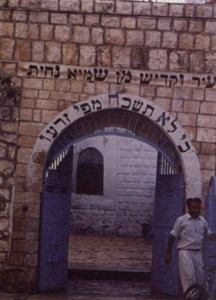Day 27 of the OmerRemember that childhood goad that never failed to get a rise out of you?
“What’s the matter? Are you chicken?”
Are you afraid to do the forbidden? Are you afraid of getting into trouble? Are you afraid of consequences? You should be!
It is the yetzer hara who tells us this today. Those who uphold the integrity of theTorah by maintaining that the practice of homosexuality is forbidden are immediately labeled homophobic. It’s not fear of Heaven but fear of homosexuals that fuels this objection. And out of fear of being viewed as fearful of sin, people, even many who call themselves “religious”, rush to excuse it and to be as open and tolerant as any avowed atheist. Some tactics of spiritual warfare are just too good to ever go out of style.
Now, there are those who say that those of us who oppose missionary activity are fearful of intereacting with Christians and the missionaries themselves take it up and say, “If you truly do have the truth then what do you have to be afraid of?” Well, I’ll tell you. There is only one thing ever to be afraid of and that is offending our Master and King – our Creator – and the fear of desecrating His Name. It’s what we call Yirat Shamayim – fear of Heaven.
And let me guarantee you this one thing. If you are not afraid now – “You will be. You will be.”

